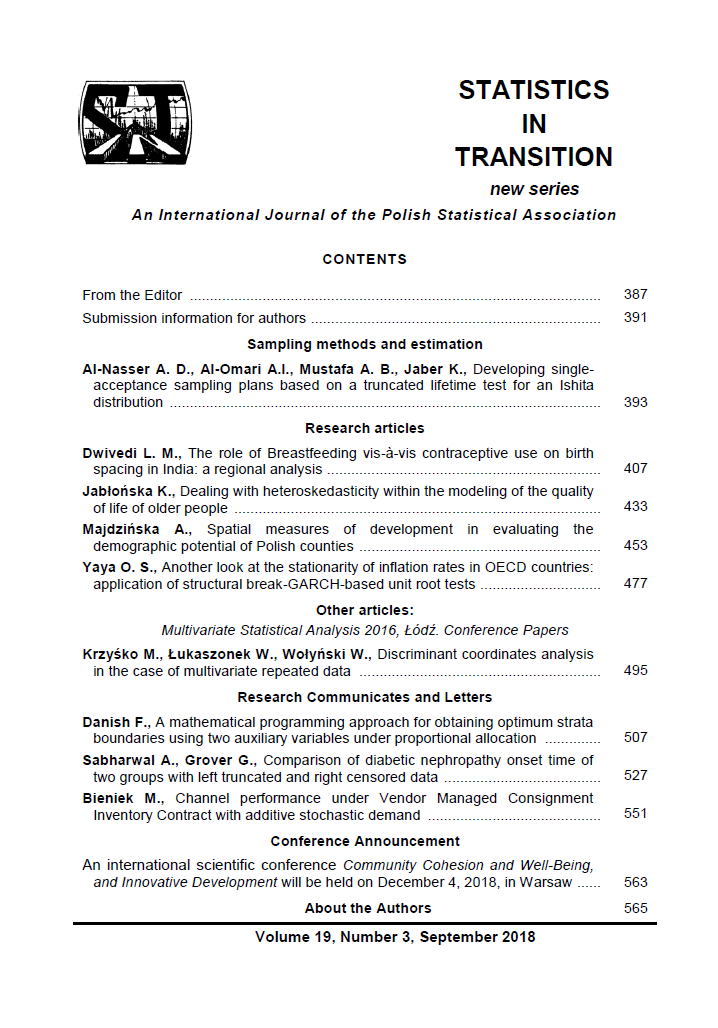ARTICLE
ABSTRACT
Consignment as the shifting of the inventory ownership to a supplier is widely implemented in virtual market. In this form of business arrangement the supplier places goods at a retailer’s location without receiving payment, until the goods are sold. We consider a single period supply chain model, where the supplier contracts with the retailer with some probability of return. Market demand is additive, linearly price– dependent and uncertain. We focus on vendor managed consignment inventory (VMCI) channel, in which the supplier decides the consignment price and his service level and the retailer chooses the retail price. We study channel performance under VMCI setting by analysing how the model parameters influence decision quantities, channel profit and risk function. We also illustrate the obtained results by a numerical example, which explains the overall solutions well.
KEYWORDS
stochastic demand, supply chain, consignment, operations management.
REFERENCES
BIENIEK, M.,(2017). Consignment Contracting with Inventory Control with Ad ditive Price-Dependent Demand. In: Yu. G. Evtushenko, M. Yu. Khachay,O. V. Khamisov, Yu. A. Kochetov, V. U. Malkova, M. A. Posypkin (eds.):Proceedings of the OPTIMA-2017 Conference, Petrovac, Montenegro, 2017,http://ceur-ws.org., 1987, pp. 88–94.
HU, W., CHEN, D., YU, H., (2017). Benefit and risk analysis of consignment con tracts. Annals of Operations Research, 257, pp. 641–659.
HU, W., LI, Y., GOVINDAN, K., (2014). The impact of consumer returns policieson consignment contracts with inventory control. European Journal of Opera tional Research, 233, pp. 398–407.KOCABIYIKOGLU, A., POPESCU, I., (2011). An elasticity approach to the newsven dor with price-sensitivity demand. Operations Research, 59, pp. 301–312.
LEE, C., CHU, W., (2005). Who should control the inventory in a supply chain?European Journal of Operational Research, 164, pp. 158–172.
LI, S., ZHU, Z., HUANG, L., (2009). Supply chain coordination and decision mak ing under consignment contract with revenue sharing. International Journal ofProduction Economics, 120, pp. 88–99.
MOSTARD, J., TEUNTER, R., (2006). The newsboy problem with resalable re turns: A single model and case study. European Journal of Operational Re search, 16, pp. 81–96.
OGRYCZAK, W., RUSZCZYNSKI, J., (2001). On consistency of stochastic domi nance and mean-semideviation models. Mathematical Programming, 89, pp.217–232.
OLAH, J., LAKNER, Z., HOLLOSI, P., POPP, J., (2017). Inventory methods in orderto minimize raw materials at the inventory level in the supply chain. LogForum,13, pp. 439–454.
PETRUZZI, N. C., DADA, M., (1999). Pricing and newsvendor problem: a reviewwith extensions. Operations Research, 47, pp. 183–194.
RU, J., WANG, Y., (2010). Consignment contracting: Who should control inven tory in the supply chain? European Journal of Operational Research, 201, pp.760–769.
RUBIO-HERRERO, J., BAYKAL-GURSOY, M., JASKIEWICZ, A., (2015). A pricesetting newsvendor problem under mean-variance criteria. European Journal of Operational Research, 247, pp. 575–587.
WANG, Y., JIANG, L., SHEN, Z.-J., (2004). Channel performance under consign ment contract with revenue sharing. Management Science, 50, pp. 34–47.
